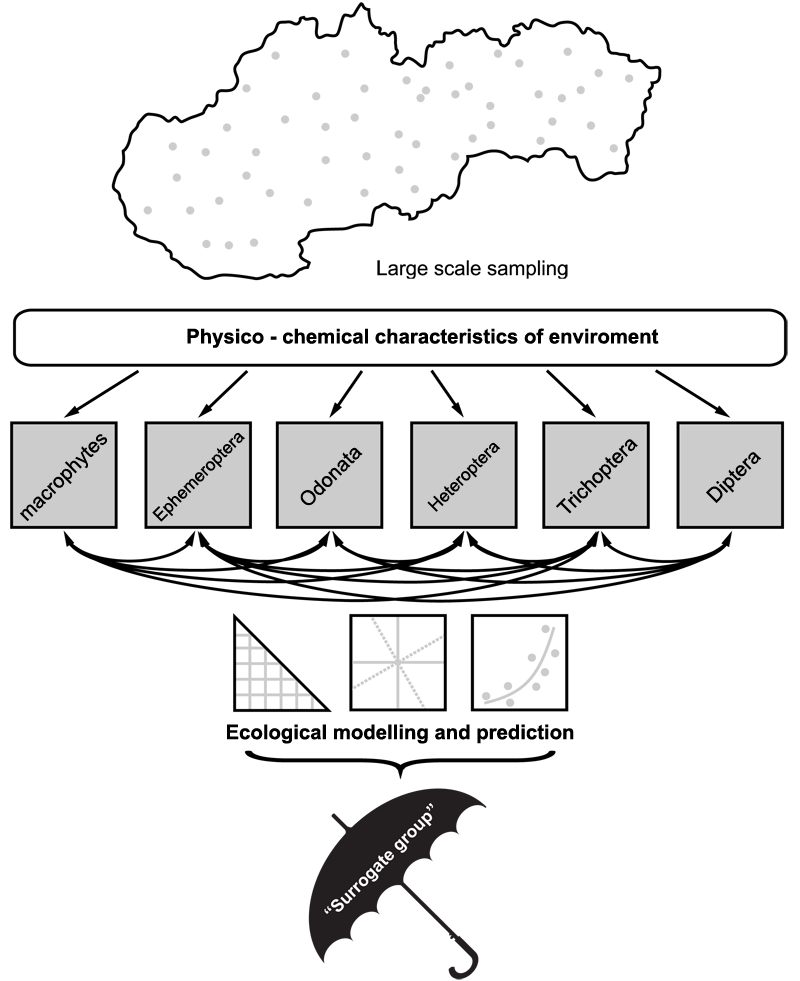About the project
Ponds, taking their environmental conditions and species composition into account, represent specific and highly endangered ecosystems. Besides the role of ponds in regulation of hydrological regime, nutrients cycles and their aesthetic or recreation functions, they have extremely high value for conservation of biodiversity. Ponds often represent „hot spots“ of biodiversity (Williams et al. 2004, Davies et al. 2008) and refugia for far more rare species than other water bodies, whereby many of these species occur only in ponds (Oertli et al. 2000). Artificial, man-made ponds represent supplementary habitats for many aquatic organisms with disappearing natural habitats (Biggs et al. 2005). To preserve existing richness and variability of aquatic organisms of these biotopes, we have to understand the relationship between organisms and their environment, including anthropic influence. This issue has been subject of concentrated research of lentic ecosystems in recent years (e.g. Toivonen & Huttunen 1995, van Geest et al. 2005, Karatayev et al. 2008, Søndergaard et al. 2010) and some results have already been used for practical applications (e.g. European Water Framework Directive, setting of NATURA 2000 network, operative management of nature conservation).
Biological research of ponds is not an easy task, primarily because of their high diversity. Most of the studies are therefore focused on particular pond dwelling taxonomic groups (cf. Lacoul & Freedman 2006, Bornette & Puijalon 2011). Comprehensive studies on the diversity of multiple groups and the relationships between them are very rare. To fill that gap, in the present project we set up a highly interdisciplinary research team involving investigators with various taxonomical expertise. Ponds are significantly affected by local conditions such as hydrological and chemical characteristics, but also the use of the habitat and surrounding landscape (Lacoul & Freedman 2006, Bornette & Puijalon 2011). Most of the taxonomic groups are supposed to be sensitive to these variables, thus we expect strong concordance between the structure and diversity of individual taxocoenoses.

Fig. 1. Logical scheme of the BIOPOND project.
The main objective of the project(Fig. 1) is complex description of the diversity of macrophytes and important groups of invertebrates (Odonata, Ephemeroptera, Trichoptera, Coleoptera, Heteroptera and Diptera) of various types of ponds in Slovakia.
The specific aims of the project are:
- to assess the influence of environmental variables on the diversity and structure of individual taxocoenoses;
- to characterize the conditions, which will assure preservation of the highest biodiversity of ponds;
- to find out the relationships among diversity of particular groups of aquatic organisms;
- to identify indicator group or groups of taxa with potential to represent the overall biodiversity of the studied biotopes.
As a practical output of the project, we intend to propose guidelines for maintaining high biodiversity in ponds.